Welcome to your free NCLEX reviewer and practice questions quiz for IV flow rate calculations and formulas. This quiz aims to help student nurses review and test their competence in the intravenous flow rate calculation.
IV Flow Rate Calculation Nursing Test Bank
The nursing test bank for IV flow rate calculations below is separated into two sets of quizzes. Included topics are IV flow rate calculation, calculating for drops per minute, calculating for milliliters per hour, and total infusion time. If you need a quick review, please read the IV flow rate reviewer below.
Quiz guidelines:
- Take Your Time: No rush! Read each question thoroughly and pick the best answer at your own pace.
- Complete the Quiz: Ensure you answer ALL questions. Only after you’ve answered every item will the score and rationales be available.
- Review Before Submitting: Once you’re done, you’ll be directed to the Quiz Summary. Double-check your answers or see if you’ve missed any before clicking the Finish Quiz button.
- Learn from Rationales: After submitting, click View Questions to understand the explanation for each answer.
- Share Your Thoughts: We’d love your feedback, scores, and questions! Please share them in the comments below.
- Free access. Guess what? Our test banks are 100% FREE. Skip the hassle – no sign-ups or registrations here. A sincere promise from Nurseslabs: we have not and won’t ever request your credit card details or personal info for our practice questions. We’re dedicated to keeping this service accessible and cost-free, especially for our amazing students and nurses. So, take the leap and elevate your career hassle-free!
Quizzes included in this guide are:
IV Flow Rate Calculations Reviewer & Formulas
The IV flow rate study guide below will help refresh your memory on calculating IV flow rates, including a refresher on the formulas and nursing considerations when maintaining IV therapy.
For more information about IV fluids, visit our IV Fluids and Solutions Guide and Cheat Sheet
How to Calculate IV Flow Rate?
- To calculate IV flow rates, the nurse must know the total volume of fluid to be infused and the specific time for the infusion.
- Intravenously administered fluids are prescribed most frequently based on milliliters per hour to be administered. The volume per hour prescribed is administered by setting the flow rate, which is counted in drops per minute.
- There are three commonly used ways on how to indicate flow rates:
- Milliliters per hour (mL/h). Calculated by dividing the total infusion volume by the total infusion time in hours
- Number of drops per one (1) minute (gtts/min). Calculated by multiplying the total infusion volume to the drop factor and then dividing by the total infusion time in minutes.
- Infusion time. Total volume to infuse divided by milliliters per hour being infused.
- Drop factor (sometimes called drip factor). The total number of drops delivered per milliliters of solution. This rate varies by brand and types of infusion sets and are printed on the package of the infusion set.
- Generally, macrodrops have a drop factor of 10, 12, 15, or 20 drops/mL.
- Microdrip sets, on the other hand, have a drop factor of 60 drops/mL.
| FORMULA FOR CALCULATING MILLILITERS PER HOUR (mL/hour) |
|---|
mL/h = \frac{total\ infusion\ volume(mL)}{total\ infusion\ time (h)} EXAMPLE: Your patient needs 2,000 mL of saline IV over 4 hours for a patient with deficient fluid volume. How many milliliters per hour will you set on a controller? Where: Total infusion volume (mL) = 2,000 mL Total infusion time = 4 hours Computation: \frac{2,000\, mL}{4\, hours}= 500\, mL/hour Answer: 500 mL/hour |
| FORMULA FOR CALCULATING DROPS PER MINUTE (gtts/min) |
|---|
Drops\ per\ minute\ (gtts/min) = \frac{Total\ infusion\ volume \times drop\ factor}{total\ time\ of\ infusion\ in\ minutes} EXAMPLE: A patient is receiving 250 mL normal saline IV over 4 hours, using tubing with a drip factor of 10 drops/mL. How many drops per minute should be delivered? Where: Total infusion volume = 250 mL Drop factor = 10 gtts/mL Total infusion time = 4 hours or 240 minutes Calculate: \frac{250 mL \times 10 gtts/mL}{240 minutes} = 10.42 gtts/min Answer: 10 gtts/min (rounded off) Fun fact: gtts is an abbreviation of the latin word “guttae” meaning drops. |
| FORMULA FOR INFUSION TIME (H) |
|---|
infusion\ time\ (hour) = \frac{total\ volume\ to\ infuse (mL)}{milliliters\ per\ hour \ being \ infused (mL/hour)} Example: A patient is ordered to received 1,000 mL of NSS to be administered at 125 mL/hour. How many hours will pass before you change the IV bag? Where: Total volume to infuse = 1,000 mL mL infused per hour = 125 mL/hour Calculate: \frac{1000 mL}{125 mL/hour} = 8 hours Answer: 8 hours |
How to Regulate IV Fluids?
- The following factors affect the infusion rate if an infusion pump is not used:
- Size of the catheter. A catheter with a larger bore allows solution to flow faster.
- Height of the IV bag. The higher the IV bag, the faster the infusion will flow.
- Position of the insertion site. A change in the position of the client’s arm may decrease the flo, while elevation on a pillow may increase flow rate. If the IV is inserted into the antecubital area, the solution can flow freely if the client extends the arm and can be obstructed if the client bends the arm at the elbow.
- Monitoring and regulating the rate of the infusion is a responsibility of the nurse.
- A slower rate is usually necessary for older adults or those who are at risk of fluid overload (e.g., heart disease or client with head injury).
- A faster IV flow rate is therapeutic for patients who have lost large amounts of body fluids and those who are severely dehydrated.
- Never increase the rate of infusion if it is running behind schedule. Check for obstructions and collaborate with primary care providers to determine the patient’s ability to tolerate an increased flow rate.
- Flow rate is regulated by tightening or releasing the IV tubing clamp and counting the drops for 15 seconds then multiplying the number 4 to get drops per minute.
- Sometimes, the IV rate order will say “to keep open” (TKO) or “keep vein open” (KVO). This order does not specify the Milliliters per hour. Generally, KVO is infused at 50 mL/h.
Flow-Control Devices
- Flow-control devices are any manual, mechanical, or electronic infusion device used to regulate the IV flow rate. These devices may include manual flow regulators, elastomeric balloon pumps, and electronic infusion devices.
- Electronic infusion devices (EIDs)
- EIDs are often used in acute care settings and use positive pressure to deliver a preset fluid volume at preset limits.
- They are programmed to regulate the IV flow rate in either drops per minute or milliliters per hour.
- EIDs use gravity to maintain the flow of the IV fluid. They sense the rate and amount of IV fluid.
- An alarm is set off if there is air in the tubing, the bag is empty, or the flow is obstructed. However, the nurse should still conduct regular evaluations of the IV site.
- Multichannel pumps
- Another type of flow-control device that can deliver several medications and fluids (from either bags, bottles, or syringes) at the same time, at multiple rates.
- Multichannel pumps usually have two to four channels with each channel that can be programmed independently.
- Mechanical flow-control devices
- Are nonelectric devices used to regular IV flow rate. These are in-line devices with a manual regulator that controls the amount of fluid to be administered.
- Rotating a dial sets the flow rate.
- Elastomeric infusion pumps
- Are disposable, portable, and nonelectric pumps that are prefilled with medication and connect to the client’s needleless connector to deliver a controlled rate of medication.
General Nursing Considerations
- Monitor for infiltration or irritation. Inspect the insertion site for fluid infiltration. If present, stop the infusion and remove the catheter. Restart the infusion at another site and start supportive treatment by elevating or applying heat to the site.
- Look for signs of infiltration. Infiltration occurs when the IV fluid is not flowing into the client’s vein but into surrounding tissues. Signs of infiltration include swelling or puffiness, coolness, pain at the insertion site, and tenderness in the area.
- Monitor for signs of phlebitis. Phlebitis is the inflammation of the vein. Signs include pain and tenderness, swelling, and warmth in the area. If phlebitis occurs, stop infusion and restart at another site. Do not use the injured vein again.
- Regularly monitor IV flow rate. Monitor IV flow rate regularly (every hour) even if the solution is administered through an IV pump.
- Assess for fluid overload. Regularly assess the patient for signs of fluid overload: increased heart rate, increased respirations, and increased lung congestion.
- Risk for fluid overload. IV flow-control devices should be used for older and pediatric patients when administering IV fluids. These age groups are at risk for complications of fluid overload.
- Proper documentation. Document all findings on the IV flow sheet or in the computer. Including the total amount of fluid administered, and any adverse responses of the client.
Recommended Resources
Recommended books and resources for your NCLEX success:
Disclosure: Included below are affiliate links from Amazon at no additional cost from you. We may earn a small commission from your purchase. For more information, check out our privacy policy.
Saunders Comprehensive Review for the NCLEX-RN
Saunders Comprehensive Review for the NCLEX-RN Examination is often referred to as the best nursing exam review book ever. More than 5,700 practice questions are available in the text. Detailed test-taking strategies are provided for each question, with hints for analyzing and uncovering the correct answer option.
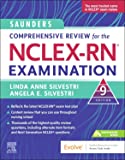
Strategies for Student Success on the Next Generation NCLEX® (NGN) Test Items
Next Generation NCLEX®-style practice questions of all types are illustrated through stand-alone case studies and unfolding case studies. NCSBN Clinical Judgment Measurement Model (NCJMM) is included throughout with case scenarios that integrate the six clinical judgment cognitive skills.

Saunders Q & A Review for the NCLEX-RN® Examination
This edition contains over 6,000 practice questions with each question containing a test-taking strategy and justifications for correct and incorrect answers to enhance review. Questions are organized according to the most recent NCLEX-RN test blueprint Client Needs and Integrated Processes. Questions are written at higher cognitive levels (applying, analyzing, synthesizing, evaluating, and creating) than those on the test itself.
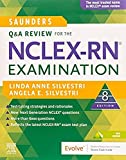
NCLEX-RN Prep Plus by Kaplan
The NCLEX-RN Prep Plus from Kaplan employs expert critical thinking techniques and targeted sample questions. This edition identifies seven types of NGN questions and explains in detail how to approach and answer each type. In addition, it provides 10 critical thinking pathways for analyzing exam questions.
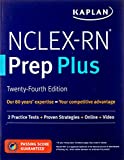
Illustrated Study Guide for the NCLEX-RN® Exam
The 10th edition of the Illustrated Study Guide for the NCLEX-RN Exam, 10th Edition. This study guide gives you a robust, visual, less-intimidating way to remember key facts. 2,500 review questions are now included on the Evolve companion website. 25 additional illustrations and mnemonics make the book more appealing than ever.
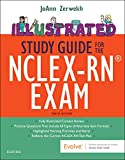
NCLEX RN Examination Prep Flashcards (2023 Edition)
NCLEX RN Exam Review FlashCards Study Guide with Practice Test Questions [Full-Color Cards] from Test Prep Books. These flashcards are ready for use, allowing you to begin studying immediately. Each flash card is color-coded for easy subject identification.
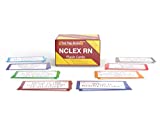
Recommended Links
An investment in knowledge pays the best interest. Keep up the pace and continue learning with these practice quizzes:
- Nursing Test Bank: Free Practice Questions UPDATED!
Our most comprehenisve and updated nursing test bank that includes over 3,500 practice questions covering a wide range of nursing topics that are absolutely free! - NCLEX Questions Nursing Test Bank and Review UPDATED!
Over 1,000+ comprehensive NCLEX practice questions covering different nursing topics. We’ve made a significant effort to provide you with the most challenging questions along with insightful rationales for each question to reinforce learning.
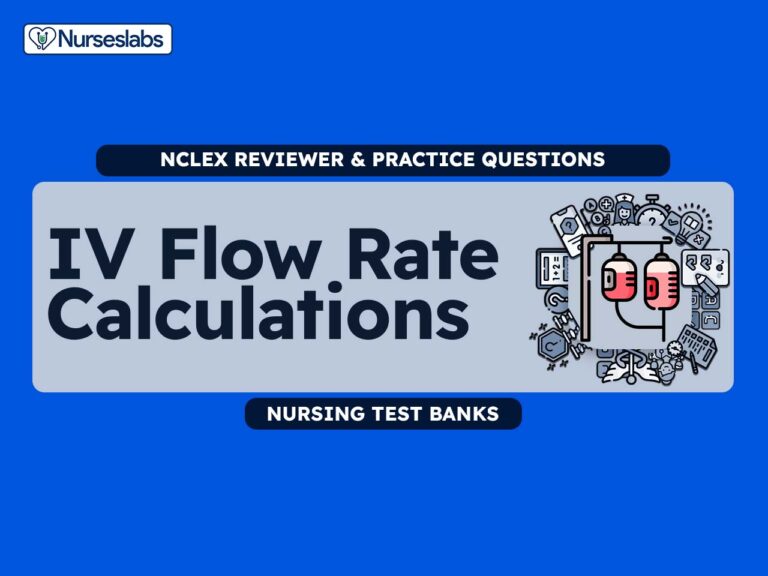
Just wanted to let you know that question 25 is incorrect.
It should be 137 gtts/min not 138 gtts/min. In your explanation, you’re not following the rules of BEDMAS where you should divide 275/120 first before multiplying by 60. If you follow BEDMAS you get 137.4 which you would round down to 137 gtts/min
Their answer is correct.
A health care provider orders cefoxitin (Mefoxin) 0.5 g in 275 mL of D5W to infuse IVPB over 2 hours; Drop Factor: 60 gtt/mL. How many gtts/min will you regulate the IV? Fill in the blank and round to the nearest whole number for your final answer.
What we want? gtts/min
What we have:
275mL/2hr -> 137.5mL/hr
60gtt/mL
Convert mL/hr to mL/min:
137.5mL/hr * 1hr/60min -> 2.2916666mL/min
Dimensional Analysis:
60gtt/1mL * 2.2916666mL/1min -> 137.5gtt/min or 138gtt/min rounded
The NTG question is incorrect. The question states 5 mcg/min, but the problem is solved using 15 mcg/min.
No matter how you do the math, 275 / 2 x 60 / 60 = 137.5 = 138. The answer is not 137.4. :)
FACTS! THIS IS CORRECT. EVEN AS STATED ABOVE 275/120 X 60 =137.5 = 138
Great practice! Thank you for setting this up! Question 23 reads ” df of 12 gtts per min, how many gtts per min?” It should read Gtts per mL.
I want to clarify ques no 3?
Hi Venilla,
What is your clarification regarding question number 3?
Thank you!
Great practice before my ATI dosage calculations exam!
Why nowadays rationale and whether correct or wrong not showing, kindly respond.
Hi Judah,
Due to performance issues, in the meantime, we have disabled the rationales from showing after each question. Rationales are still available but only at the end of the quiz. Please bear with us while we try to resolve this problem.
unit of measure drip rate
measure is gtt/min
gtt/min = 60gtt/ml x 275ml/2hr x 1hr/60min
= 16500gtt/120min
= 137.5gtt/min
0.5gtt cannot be given hence
gtt/min = 138gtt/min
Great opportunity!
Hey good morning!
It seems as if the nursing test bank for IV Flow rate puts you in a continuous two page loop back and forth with no questions present. Maybe the link is broken or missing?
Hi Jeffrey, I checked and it’s working fine on my end. I think your browser is blocking opening new tabs, but I have updated the links and they should open in the same tab/window. Thank you for letting us know!